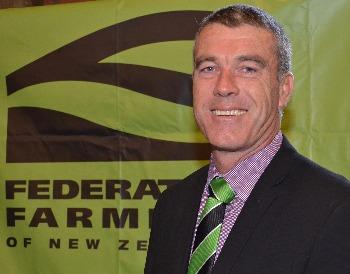Summit puts wool action high on the agenda
By Miles Anderson, Federated Farmers Meat & Wool Chairperson

It’s understandable that out in the regions there is probably a fair degree of cynicism over the Wool Summit that happened in Wellington this week. I can almost hear the calls of ‘talk-fest’ and ‘we’ve been down this path before’ from here.
But I can honestly report the industry reps who walked into that venue on Monday morning left feeling a helluva lot more optimistic that our wool industry can bounce back from its current crisis. And it’s not an exaggeration to call it a crisis: when the costs of treating for fly and lice, crutching, insurance on the woolshed, shearing and so on exceed – or are at best break-even – with returns, we’re in deep trouble.
The summit could be regarded as the last roll of the dice. If we don’t turn things around in the next few years, particularly with strong wool returns, the next time meat prices take a dip the exodus of sheep farmers into dairy grazing, bull beef, cropping, etc., could swell from the current trickle to a flood.
The summit drew 40 or so representatives from all the major industry players – Cavalier, PGG Wrightson, Merino New Zealand, Wools NZ, CP Wools, etc – and there was pretty much immediate consensus that whatever our response, it needed urgency.
A working group has been formed, and a plan of action is being drawn up. Two priorities are the need for a co-ordinated effort on better telling the ‘wool story’ in our overseas markets and in New Zealand, and tackling the shearing workforce dilemma.
Wool’s time should be right now. With all the concern around the world about environmental issues, the interest in natural products rather than oil-based synthetics, and wool’s hard-wearing, flame-retardant, non-allergenic properties, sales should be riding high. But in New Zealand we lack an over-arching, co-ordinating body to tell that story, with a brand and an impetus that the myriad individual companies and wool innovators can leverage off. That’s the group we’re going to form now.
Our other looming problem is around our ageing workforce and attracting new, keen and able people into the industry. In many respects the answer to that conundrum is closely tied to telling wool’s story in a compelling and co-ordinated way. If all people read about is wool returns being down in the dumps, it’s hardly an inducement for new industry entrants to pick up a shearing hand-piece.
The shortage of shearers this year all over New Zealand has highlighted our future vulnerability. We’re nowhere if we can’t get the stuff off the animals’ backs. With Te Ako Wools’ training falling over, the Wool Harvesting Industry Partnership’s talks with the Primary ITO (the same body with whom Feds set up the new dairy apprenticeship) are a firm priority.
Another indication of the seriousness and focus farmers are putting on action is the decision by delegates to the Federated Farmers national conference in June to investigate the worth of a wool levy to fund industry-good initiatives. Read that word again – “investigate”. No commitments at all have been given, just recognition that the potential for a levy to help turn things around deserves thorough scrutiny before we put it to farmers for a ‘yay’ or ‘nay’.
I think we’re going to see some momentum on the issues besetting our wool industry. It was Agriculture Minister Damien O’Connor who called this week’s summit. He’s rolled up his sleeves and shown willingness to get to work on this too.